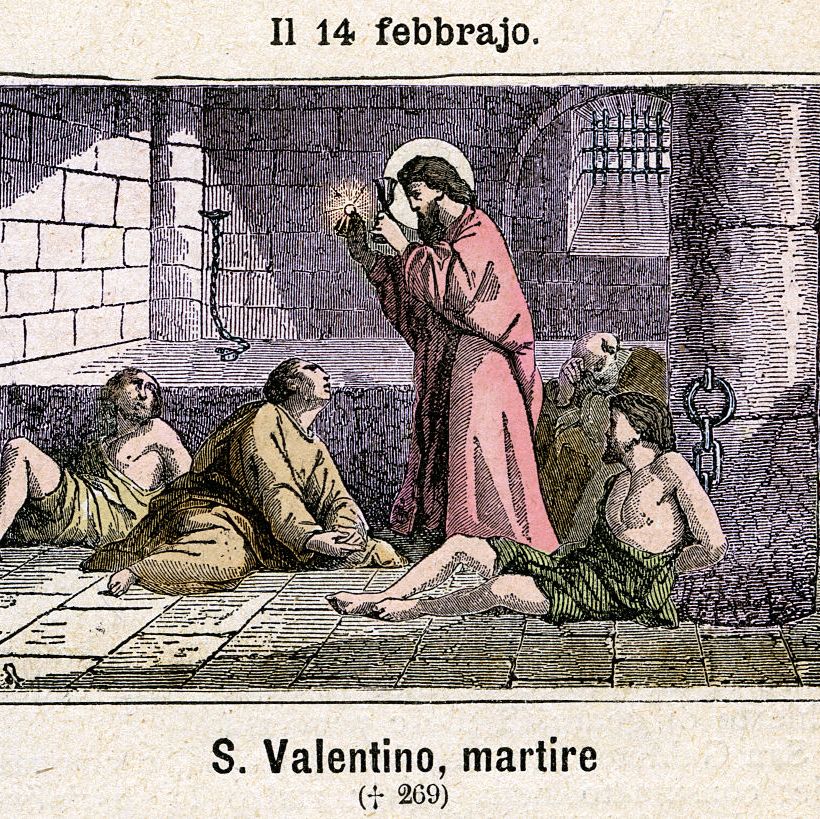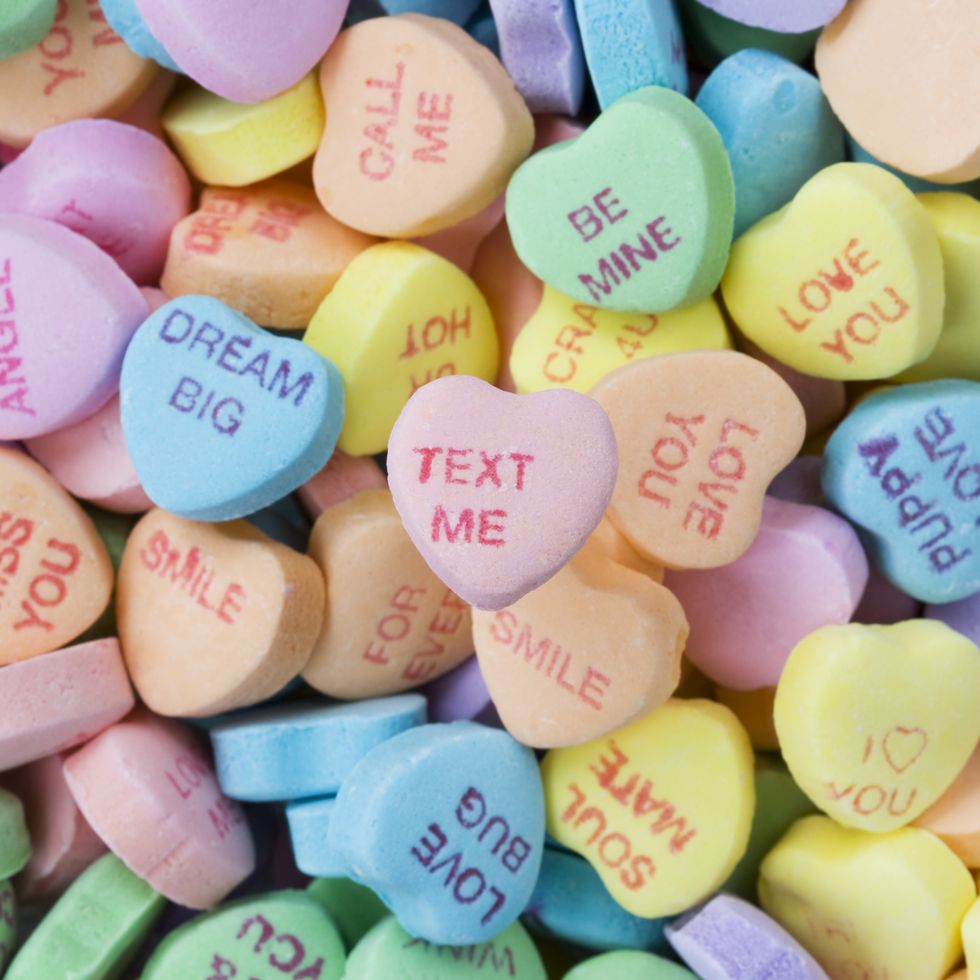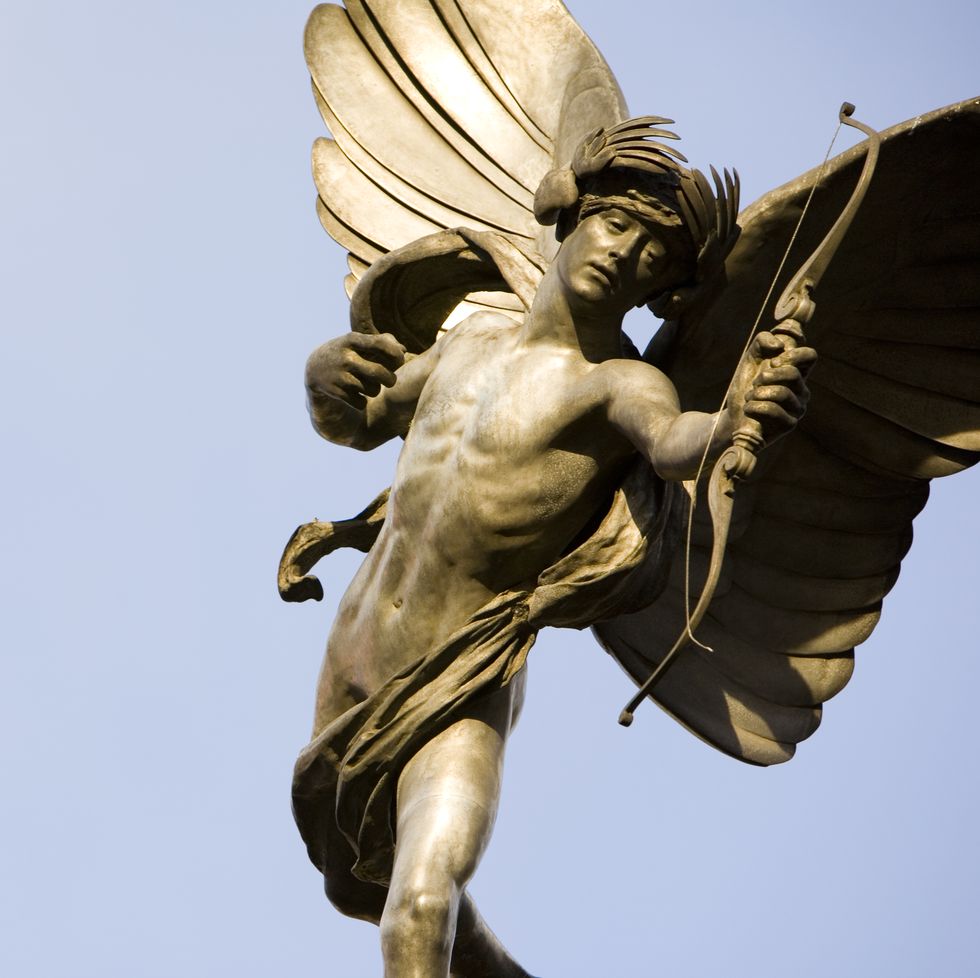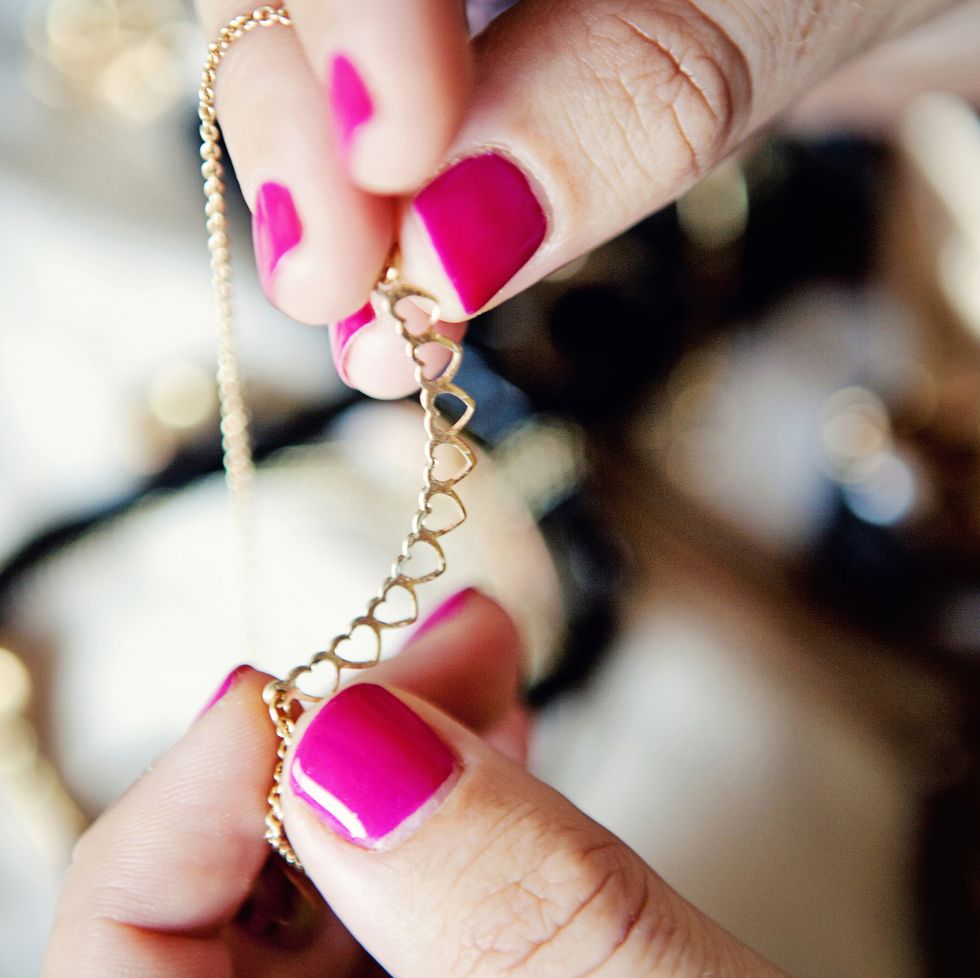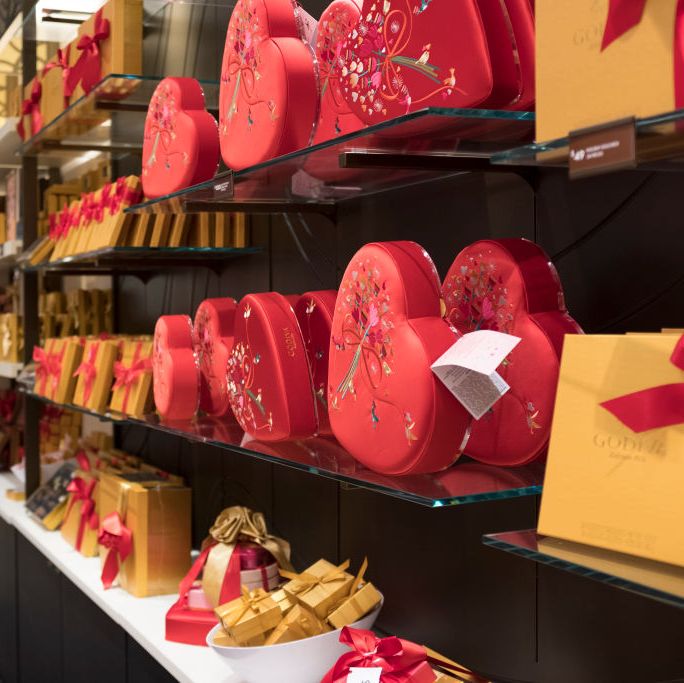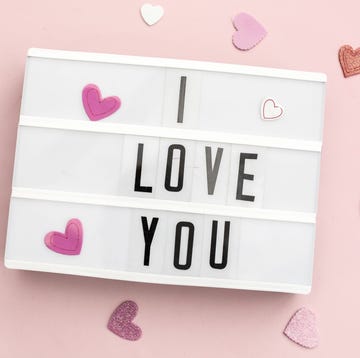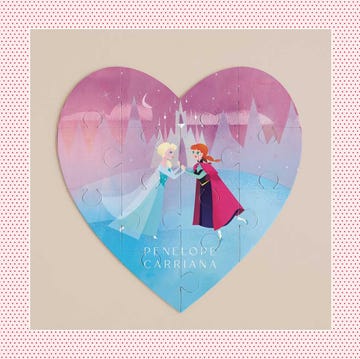With Valentine’s Day on the horizon, you may find yourself wondering about the history behind the holiday and its many traditions. If you've ever asked, “Who is Valentine’s Day named after?” Or, “Why do we celebrate Valentine’s Day?” You're not alone. This is just a fraction of what we’ve researched to compile our list of Valentine’s Day trivia questions and answers.
Browse through our fun facts about Valentine’s Day to learn more about the holiday of love or gather the info as a resource for a lighthearted Valentine’s Day activity of trivia with friends, family, or your significant other. No matter how you use this information, we're sure you’ll be surprised by some of these interesting facts related to the holiday.
We cover the gamut of data and stats about Valentine’s Day gifts, spending, food, history, and more! You can even use this information to your advantage this year by buying a bouquet of the most popular V-Day flower and a box of chocolates with the most popular flavor inside. And don’t forget about the dinner reservation. We’ve made sure to include the most popular restaurant cuisine, so you know just where to book that table for two.
For more Valentine’s Day ideas, check out our stories on Valentine’s Day movies, Valentine’s Day crafts, and love messages — perfect for a Valentine’s Day card.
Valentine's Day Trivia About History
Valentine's Day started with the Romans.
There are two theories about the origin of Valentine's Day. Some believe the day derives from Lupercalia, a raucous Roman festival from February 13-15, where men stripped naked and spanked young maidens in the hopes of increasing their fertility.
The second theory is that while the Roman Emperor Claudius II was trying to bolster his army, he forbade young men to marry. In the spirit of love, St. Valentine defied the ban and performed secret marriages, and for his disobedience, Valentine was executed on February 14 around the year 270 A.D.
Valentine's Day was first declared a holiday by a pope.
In 496 A.D., Pope Gelasius I made the feast of St. Valentine an official holiday, apparently hoping to expel the pagan rituals of Lupercalia by combining it with St. Valentine's Day.
The holiday was later removed from the Roman Calendar of Saints.
After the Second Vatican Council in 1969, Pope Paul VI decided to remove St. Valentine's Day from the calendar of major holidays, mostly because very little about the actual St. Valentine could be verified. However, its religious observance is still allowed. Anglicans and Lutherans recognize February 14 as an official feast day while the Eastern Orthodox Church celebrates St. Valentine on July 6.
The first Valentine's Day celebration occurred in Paris.
The first known official celebration of Saint Valentine’s Day took place in Paris in the 1400s, which is when King Charles VI of France established La cour amoureuse, the high court of love. The court, entirely run by women, met to deal with marriage contracts, divorces, infidelity, and domestic violence.
Passing out Valentines is a 600-year-old tradition.
The oldest record of a Valentine is a poem Charles, the Duke of Orleans, wrote to his wife when he was imprisoned in the Tower of London in 1415, in which he refers to his wife as his "Valentine." For lack of a better phrase, the rest is history.
Esther Howland is the first manufacturer of Valentines.
Before Esther Howland commercialized Valentine's Day cards and became known as the "Mother of the American Valentine," Valentines in America were less romantic and more comical. Her inspiration came from the thoughtful and sweet greeting cards that were circulating in England, and she decided to sell similar designs in the U.S., starting in the 1870s. Needless to say, they took off.
You could once buy booklets devoted to writing Valentine's Day cards.
Around the turn of the 19th century, those who struggled to come up with their own Valentines messages could purchase Valentine Writers that were pamphlets containing popular collections of pre-written love messages to be used as inspiration. Though, they were more often used as sources of satire than useful handbooks.
An infamous king made Valentine's Day an official holiday.
In 1537, England's King Henry VIII officially declared February 14 the holiday of St. Valentine's Day by royal charter. And yes, he is the monarch who had six wives: one who died, one who survived, two who he divorced, and two who he beheaded.
"Vinegar Valentines" were used to deter suitors in Victorian England.
During the Victorian Era and into the 20th century, those who didn’t want the attention of certain suitors would anonymously send "vinegar valentines" or "penny dreadfuls" that would range from sassy to cruel and could be purchased to insult just about anyone in your life.
English women believed bay leaves to bring good luck on Valentine's Day.
Vinegar Valentines aren't the only strange Valentine's Day tradition from England. In the 1700s, rural English women would pin five bay leaves to their pillows — one in the center and four on the corners — on the night of February 13 in order to have sweet dreams about their future husbands.
Valentine's Day wasn't always a romantic holiday.
February 14 wasn't associated with romantic love until the late 14th century, which is when Geoffrey Chaucer published his poem, "The Parliament of Fowls." In the poem, he calls St. Valentine's Day the day when birds choose their mates, and from then on, people started considering the holiday a romantic one.
A very important patent was applied for on February 14.
On Valentine's Day in 1876, a then 29-year-old Alexander Graham Bell applied for his telephone patent, entitled an “Improvement in Telegraphy.” That same day, inventor Elisha Gray applied for a patent caveat for a similar invention from the same office, but Bell ended up receiving patent approval first less than a month later.
Valentine's Day Trivia About Symbols
Candy hearts were created by a pharmacist.
In the mid-19th century, Boston pharmacist Oliver Chase began making lozenges without medicine that could be eaten as candy, further increasing the already high demand for lozenges.
Candy hearts were made using the first ever candy-making machine.
Because of the high-demand for lozenges, Oliver Chase invented a machine that simplified their production process in 1847, resulting in the first candy-making machine. After identifying an opportunity to revolutionize the candy business, Chase shifted his focus to candy production and created the brand Necco, the longest-operating candy company in the U.S., that went on to create candy hearts 55 years later.
The candies got their iconic shape much later.
It wasn't until 19 years after the creation of Necco that Daniel Chase, brother of Oliver Chase, developed a way to press words onto candy lozenges with a felt roller pad and vegetable food coloring. It took an additional 36 years for the conversational candies to become officially heart-shaped.
Candy hearts weren't available in 2019.
In 2018, Necco declared bankruptcy, forcing the company to close its original plant and sell off its candy brands. Spangler Candy Company ended up acquiring the rights to Sweethearts, and after setting up production in a new plant, Sweethearts returned to shelves in 2020 — but not without a few changes due to equipment problems. Luckily, by 2021, Spangler had worked out the kinks.
Wearing your heart on your sleeve is more than just a phrase.
In the Middle Ages, young men and women drew names to see who their Valentine would be for the Roman festival Juno, and they would wear the name pinned to their sleeve to signify the identity of their love interest for the coming year.
Cupid's bow and arrow weren't just for show.
In Roman mythology, Cupid is the son of Venus, the goddess of love and beauty, and he's often depicted with a bow and arrows to pierce hearts and cast a spell of love. In Greek mythology, Cupid's name is Eros, and he is the son of Aphrodite.
People consider pink and red to be the colors of love.
According to the National Confectioners Association, around 65% of Americans believe that the packaging of Valentine's Day candies and chocolates should be red and pink.
The heart shape wasn't always a romantic symbol.
The heart was once widely believed to be a human's center of memory, where feelings of love were recorded. However, we have French and Italian artists from the 14th century to thank for the symbol that we know and love today, as they were the first ones to start using this motif in their work.
The modern-day heart symbol derives from animals.
It's well-known today that the heart-symbol often drawn on cards and love letters doesn't actually resemble a human heart, but back when it was first created, it was believed to be quite accurate. The symbol first came about in 1255 when most of what was known about the body came from dissections of animals. Because of this, the heart shape is most closely related to that of a bird or reptile heart.
Xs and Os didn't always mean kisses and hugs.
It's believed that signing with an X comes from the Middle Ages, when an X was used in the place of a signature since many people couldn't read or write. It was also seen as a Christian symbol that represented the cross. The history behind it is that Christians kissing statues of Christ or kissing the Bible led to X getting its meaning as a modern-day kiss.
Roses are the flowers of love.
Can you guess the favorite flower of Venus, the Roman goddess of love and beauty? According to legend, it's the red rose, of course.
There is a city in Texas with a perfect name for the holiday.
If you're looking for the place with the most Valentine's Day spirit in the United States, don't expect to find it in a big city. In fact, the most love-struck town of all is none other than Valentine, Texas, which gets its name from the popular saint. Don't drive through it too quickly though, or you might miss it — the town's population is only 108 people, according to 2021 numbers.
Valentine's Day Trivia Stats
Today, millions of greeting cards are purchased every year.
Every year for Valentine's Day, an estimated 145 million greeting cards are exchanged in the U.S. alone, according to Hallmark, making it the second largest holiday for greeting cards after Christmas.
February 14 is a busy day for restaurants.
Unsurprisingly, Valentine's Day is one of the busiest days of the year for restaurants, second only to Mother's Day.
The most popular restaurants on Valentine's Day are Italian.
Unsure where to take your significant other on Valentine's Day? A safe bet would be for a plate of pasta. Italian is the most searched for restaurant cuisine around V-Day, with a 27% increase in interest. The second most searched restaurant cuisine is French at 18%.
Jewelry is a popular (and pricey) Valentine's Day gift.
In a report from the National Retail Federation, Americans spent a whopping $6.2 billion on jewelry in 2022 for their special someone in honor of Valentine's Day. How many roses do you think you could buy with that?
Spotify revealed the most-added song to love-themed playlists.
According to the music streaming platform, "All of Me" by John Legend is the most-added song in love-themed playlists. It's also the top song choice on Spotify playlists called "Valentine's Day," for both men and women. Streams of the track, which was released in 2013, have spiked by at least 50% on Valentine's Day every year since.
Experiential gifts are on the rise.
In 2017, 40% of consumers told the National Retail Federation they wanted an "experience gift"— tickets to a concert, an outdoor activity, an evening out, etc. — although only 24% planned to give one. This gift option is particularly popular with Gen Z and millennials: 45% of people ages 18 to 24 and 40% of people ages 25 to 34 said they planned to give experiences for Valentine's Day.
More Americans skip Valentine's Day than you realize.
Whether it's because they're single or think the holiday is cheesy, 51% of adults surveyed by the National Retail Federation in 2019 said they're not celebrating the day of love, though they may treat themselves to a small gift or a night out with friends and family.
Interest in Valentine's Day is declining.
Though spending is at an all-time high, interest in Valentine's Day is waning. According to Statista, online interest in Valentine's Day has decreased since the pandemic, dropping 32.7% from February 2021 to 2022.
Valentine's Day is not just for humans.
People really do love their pets because according to the National Retail Federation, 27% of people celebrating Valentine's Day in 2020 said they were also buying gifts for their pets, which is up from 17% in 2010.
Your chocolates probably come from the West Coast.
California is the state with the largest number of chocolate makers. That means those heart-shaped goody boxes you're gifting your loved one this Valentine's Day might come from the West Coast. The state has 125 chocolate makers, such as Ghirardelli and See's, according to the U.S. census. Pennsylvania comes in second, with 114 chocolate artisans, from names such as The Hershey Company and Whitman's.
Most Valentine's Day roses are imported.
California also produces 60% of American roses, but interestingly enough, the vast number of roses sold on Valentine's Day in the U.S. are imported — predominantly from Colombia.
Valentine's Day is the biggest holiday for florists.
According to the Society of American Florists, Valentine's Day accounts for 30% of all holiday flower purchases, beating out Christmas, Mother's Day, Thanksgiving, and Easter.
Roses are the most gifted Valentine's Day flower.
Of all the flowers gifted on Valentine's Day, roses make up 56%, making them the majority favorite for the holiday. However, if your loved one isn't a fan of roses, the second most popular flower is the red carnation.
Americans spend a lot on love.
According to a survey by the National Retail Federation, Americans spent $25.9 billion on Valentine's Day in 2023, the second-highest year on record. The record for spending was set in 2020, with $27.4 billion spent on the holiday.
Men have the biggest V-Day budget.
While Valentine's Day is a holiday of love, most often celebrated by couples, one gender spends significantly more on gifts than the other. On average, men spend $249 on Valentine's Day gifts while women spend an average of $57.
People prefer candy over flowers.
Both men and women prefer to receive chocolate over flowers, according to the National Confectioners Association. The survey also found that chocolate sales represent around 75% of Valentine's Day candy purchases.
Commercialization is why many choose not to celebrate.
While 49% of people celebrate Valentine's Day, more than half of those who don't opt out because of commercialization. Many people feel the pressure to spend takes away from the holiday's meaning.
Breaking up on Valentine’s Day is more common than you may think.
It's not all sunshine and roses on Valentine's Day. In fact, 1 in 14 Americans have broken up with someone on Valentine's Day. That's 7 percent! Similarly, 6% of Americans have broken up with someone before V-Day and another 6% after the holiday. Let's hope that necklace and stuffed animal can be returned.
Valentine's Day Trivia About Traditions
The chocolate box has been around for more than 150 years.
In addition to creating arguably the richest, creamiest, and sweetest chocolate on the market, Richard Cadbury also introduced the first box of Valentine's Day chocolates in 1868.
And there's a standout favorite in every box.
According to the National Confectioners Association, caramels are the most popular flavor in chocolate boxes, followed by chocolate-covered nuts, chocolate-filled, and cream-filled chocolates.
A knight started the tradition of sending flowers.
Ever wonder who came up with the idea of sending flowers as a gift? After travelling through Turkey in the mid-1500s, knight Louis Girard presented King Charles IX of France with a lily for good luck. King Charles liked the idea so much, he sent a bouquet to every lady in the royal court, launching a full-blown holiday known as La Fête du Muguet that takes place on May 1.
Women are more likely to treat themselves than men on Valentine's Day.
Twenty percent of flowers purchased by women on Valentine's Day are going to none other than themselves, according to the Society of American Florists. Men also partake in the floral self-gifting but in much smaller numbers of eight percent.
Valentine's Day is a popular holiday to get engaged.
This seems fitting: A 2017 study by diamond retailer James Allen found that 43% of millennials chose Valentine's Day as their ideal day to propose or to accept a proposal.
Teachers are the number one recipient of Valentines.
Oftentimes, elementary school classes exchange Valentine's Day presents to celebrate the February holiday. That means teachers often receive a sweet note from each of their students, making them the the largest group of Valentines recipients.
In Japan, women do most of the gifting on Valentine's Day.
Valentine's Day was first introduced to Japan in 1936 and has since become wildly popular. However, due to a translation error, only women buy chocolate and gifts for their sweethearts on February 14. But don't worry — women get their turn to be spoiled. On March 14, Japan celebrates White Day, which is when men buy gifts for their partners.
Some Nordic countries celebrate friendship on February 14.
Finland and Estonia recognize Valentine's Day a little differently. Known as Ystävänpäivä in Finland and Sõbrapäev in Estonia, both countries use the holiday as a Friend's Day, where they exchange cards and gifts not only with lovers but with friends and family members as well.
Filipinos have the most unique Valentine's Day tradition.
In the Philippines, February 14 is the most common date for wedding anniversaries. Over the past decade, mass Valentine's Day marriages have become increasingly popular. During them, hundreds of couples say “I do” at the same time.
For Ghana, Valentine's Day is all about chocolate.
Other countries that celebrate Valentine's Day include Argentina, Brazil, Bulgaria, Canada, Czech Republic, Denmark, England, France, Italy, Mexico, Romania, South Korea, Spain, and Wales among others, though Ghana probably has the coolest tradition of all. Starting in 2007, February 14 has been known as National Chocolate Day in Ghana in order to promote the consumption of chocolate.
There's more to wearing the color red than you might think.
The color red has connotations of passion and sexuality, and it turns out science can actually back up those ideas. At the University of Rochester, psychologists found that men saw women as significantly more attractive and sexually desirable when they were wearing the color red or standing in front of a red background versus women wearing a different color. And it's not just women who are more attractive in red. The study found that women felt the same of men who were sporting the color.
People send thousands of Valentines each year to this fictional character.
Every year on Valentine's Day, the city of Verona in Italy receives thousands of letters addressed to Juliet of Romeo and Juliet, William Shakepeare's famed play. Volunteers respond to each letter and award the "Cara Giulietta" ("Dear Juliet") prize to the author of the most romantic letter.
Galentine's Day has become a beloved spinoff holiday.
Galentine's Day may have begun as a made-up holiday on the hit TV show Parks and Recreation, but that doesn't mean it's not totally real today. According to the National Retail Federation, Valentine’s Day gifts for friends accounted for 7% of the total spending for 2020.
Corinne Sullivan is an Editor at Cosmopolitan, where she covers a variety of beats, including lifestyle, entertainment, relationships, shopping, and more. She can tell you everything you need to know about the love lives of A-listers, the coziest bedsheets, and the sex toys actually worth your $$$. She is also the author of the 2018 novel Indecent. Follow her on Instagram for cute pics of her pup and bébé.
Kate Franke (she/her) is the editorial assistant at Woman’s Day. She loves all things lifestyle, home, and market related. Kate has a BAJMC in Magazine Media and BA in Writing from Drake University. She is a proud ASME alum whose work has appeared in Food Network Magazine, The Pioneer Woman Magazine, Better Homes & Gardens, Modern Farmhouse Style, Beautiful Kitchens & Baths, and more. Next to writing, Kate’s two favorite things are chai lattes and pumpkin bread!

